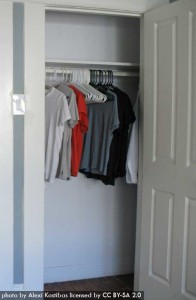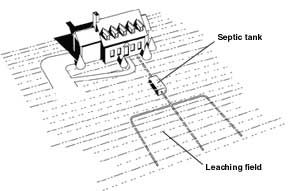
Are you thinking of buying an older home? Maybe you love the idea of living in a home that’s stood through years of local history, or you love the unique architectural features and building materials that come with a lot of older construction. Whatever it is about old homes that you love (and there are lots of reasons to love older homes!) you may be worried about buying a house that winds up costing way more than you’d planned on in repairs and upgrades. While nothing is ever completely certain, the smartest thing you can do while shopping for an older home is to educate yourself about potential issues, and to get as much information as possible about any home before you buy it. Older homes can come with some challenges, but by asking the right questions and knowing what to look for, you can find the perfect older home for you and your family.
Knowing now is better than finding out later.
Unforeseen repairs, costly updates and time-consuming maintenance can sometimes make owning an older house an exercise in patience (and budgeting). Knowing what you’re walking into can be the difference between feeling overwhelmed by unanticipated problems and enjoying the creative process of updating an older home.
Although this article is far from exhaustive, here are some of the major things you should look for when buying an older house.
Older vs. Modern Floor Plans
Let’s start with what’s right in front of you: the floor plan. Much of what is different about the design of older homes is a factor of the differences between how we live in 2015 and how a family lived in 1950 or 1930 or 1900. Lifestyles are different today than they were a hundred years ago, and home design has changed accordingly. When you are looking at an older home, the floor plan is one of the easiest things to assess – you can see exactly how each room is laid out and imagine you and your family living there. Be observant as you tour each house and think critically about how your family uses space in your current home.
Closet Space
One way in which old and new floor plans tend to differ is in the amount of closet space. Today, we enjoy the storage afforded by our roomy walk-in closets, but older homes typically had much smaller closets; people simply owned fewer sets of clothes a hundred years ago. Older closets may have unique features – cedar paneling to repel moths, or a closet within a closet for off-season storage – but generally speaking you will have less closet space in an older home than in one built more recently.

Think about how much this matters to you. Is it something you would need to change once you own the home, or do you keep things pretty minimalist and don’t need a lot of storage? Does the home have other space that could be used creatively as storage instead of closets? Visualize yourself, and your stuff, moving into the home and be realistic. The more you can think through the unexciting logistics of living in a home the better you will be able to find the home that’s right for you.
Smaller Kitchens
Older homes also tend to have more closed-off floor plans, instead of the open floor plans most homes are built with today. In homes originally built without central heating, all rooms usually had doors to keep heat from fireplaces from escaping. Cooking was done out of sight, sometimes by domestic help, and so kitchens were often designed with doors to be closed off, rather than being open to the main living space. Because the eating and entertaining was done in a formal living or dining room, the kitchens themselves were much smaller. Imagine how this type of floor plan might fit with your lifestyle and think about any changes you would need to make.
Being thoughtful about how a floor plan is laid out and considering carefully how you use the space in your home now can help you assess how important, or unimportant, different aspects of a floor plan are to you and your family. A home’s floor plan can be altered, and if a major renovation fits in your budget and schedule, a small kitchen and closed-off rooms can usually be opened up.
Behind the Walls and in the Basement
Now onto the questions that require a little more digging. Heating, air conditioning, plumbing, wiring, fireplaces, roofs—all of these features have the potential to lead to problems in an older home. Your job, before closing on your dream house, is to know as much as possible about what you are walking into. Just because you don’t know much about plumbing or HVAC systems, doesn’t mean you should be intimidated by an older house. Be curious and willing to ask questions, and don’t worry about sounding like an expert from HGTV. Your real estate agent’s job is to help you make the best, most informed decision possible.
You have three main investigative tools when buying an home: the seller’s disclosure, a professional home inspection, and your own willingness to poke around and ask questions. If you know ahead of time what issues are deal-breakers for you (for instance, you know you can’t afford to replace a roof in the next few years), and you pay close attention when you tour the home, you can save yourself some hassle by ruling out homes quickly. We’ll discuss what’s covered in the disclosure and home inspection later, but let’s start with some things you can look for on your own.
Air Conditioning
Most older homes won’t have central air unless they have been updated. Ceiling fans and open windows used to be all people had to get them through the summer, and some homes in the South even had “sleeping porches” where people could sleep outdoors in hot weather. If an older home has been updated to include central air conditioning, find out how old the unit is. If it is an older unit, you may want to replace it with a more energy-efficient model.
If the home you are interested in does not have central air, you first need to decide if you really need it. In cooler climates you may only have a few weeks of real heat to deal with, and a few ceiling fans and a window unit may work just fine. However, in warmer climates it can feel like a necessity. If your home was built without central air, it can be pricey to install. Is there existing ductwork (for instance, from a forced-air heating system) that a central air system can be run through? Look for floor or ceiling vents. The installation process for a house with ductwork already installed will likely be simpler and cheaper than if the home needs to be retrofitted with ductwork and vents.
Heat
There are two aspects to any heating system: the source of the heat (is it burning oil or gas? or is it electric?) and how it is moved throughout the house (forced air? hot-water radiators? baseboard heaters?). Both of these things should be apparent upon viewing the home, and some indication of how a home is heated is usually included in the online listing. Whatever heating system is installed in the home, you should find out how old it is and whether any major repairs or updates have been made recently.
Heating costs vary from region to region and house to house. Some older homes may have higher heating costs because of drafty windows or poor insulation. If you can find out from the seller what an annual winter of heating bills costs, this information can help you get an idea of what it will actually cost to live in the house.
The fuel that powers your heating system also plays a big factor in your heating bill. For instance, fuel oil used to be cheaper than it is now and so some older homes have oil furnaces, however this can be an expensive way to heat a home today.
Another thing to consider is the type of stove you prefer. If you really want a gas range, but the house has electric or oil heat and has never been plumbed for gas, this is an additional expense to consider.
Plumbing and Sewage
Plumbing and sewer issues can crop up seemingly out of nowhere and can wind up being very expensive. Old homes may have pipes built out of cast iron, which can corrode and leak. Over time, any underground pipe can be subject to unseen wear and tear. Sewer lines can become clogged with tree roots and cause toilets to backup and overflow. Even the best plumbing system is not designed to last forever, so it’s important to find out the age of your plumbing and wastewater systems.

If the house has a septic system instead of a sewer line, you may consider a separate septic inspection. A septic system works by containing waste in an underground tank, where bacteria can break it down, and then allowing the waste to leach out into the soil through a system of underground pipes. Septic systems usually last 25-30 years, so it’s important to find out how old the system is. Tree roots can damage a septic system just like they can damage sewer pipes, and the cost of replacing a septic system can reach into the tens of thousands. Here is a great video explaining how septic systems work from Clayton, NC realtor David O’Doherty.
Although you will not know exactly what every inch of plumbing looks like before buying a house, finding out as much as possible is important. Pay close attention to the seller’s disclosure for any mention of plumbing or sewer repairs. It may be valuable to ask for more details about any disclosed repairs, as smaller issues that have been fixed may still indicate larger issues that will need to be addressed down the road.
Once you move ahead with an inspection, your home inspector will tell you what he observes and should make sure there are no visible leaks. If there are any major issues observed, you can ask the seller to have them repaired before closing, or ask for the seller to cover the cost of you repairing them. Find out as much as you can about the plumbing, and factor in the cost of any repairs you plan to make.
The Roof
No roof is designed to last forever, so you should determine the age of the roof when buying any home. When walking around the inside of the home, look for signs of water damage on the ceilings and walls. Brown water stains or bubbling paint can indicate that water has seeped in through the roof. (Water damage on the first floor ceiling of a two-story home can also indicate plumbing leaks from bathrooms above.)

If the home has an attic, this is another place where water damage may be noticed before it has a chance to make its way into the main part of the house. Again, a home inspection should uncover signs of water damage, but it doesn’t hurt to be aware of this early in the home buying process.
Windows
It may seem obvious, but you should try opening the windows of any house you are looking at. If the windows are painted shut, or the mechanisms are broken, and opening and closing them is a major hassle, you may need to have them repaired or replaced. Many older windows will have removable storm windows that you can swap out with screens when warmer weather comes. Ask about these and make sure that if the windows are supposed to have them, they are present and accounted for. Windows are subject to a lot of wear and tear from opening and closing, which brings us to the next item…
Lead Paint
Lead paint was used up until 1978 when it was banned for use in residential construction. If your house was built before 1978, it’s likely there is lead paint somewhere. Is this a problem? It can be, but not necessarily. Lead paint on a ceiling, covered with layers of modern paint and never touched, is probably not going to hurt you and would be best left alone. Lead paint causes harm when it begins to disintegrate and the dust is inhaled — which is why windows are one place it is important to check for lead paint. Windows, doors, or other places where paint is repeatedly scraped or rubbed (turning old paint into dust) are the most likely places for lead paint to present a hazard.
Your home inspector will not typically check for lead paint. There are at-home lead paint test kits that you can use, or you can hire a professional to do an assessment. If lead paint is present, a professional can give you advice about how significant the risk is and what your best next steps are.
Asbestos
Another potentially hazardous material that can be found in older homes is asbestos. Similarly to lead paint, asbestos only poses a health risk when it is disturbed and the released fibers are inhaled. Asbestos was used as insulation on pipes and in walls, and was also used in roofing shingles, some kinds of paint, and in other applications. Most uses were banned in the 1970s. Although home inspectors will not routinely test for asbestos fibers, a good home inspector will let you know if he suspects asbestos insulation may be used and can recommend an asbestos professional to do further investigation and possible removal or encapsulation of the asbestos. You can read more about asbestos here.
Wiring
Although electricity has been available in homes for over a century, there are some major differences between hundred-year-old electrical wiring and modern wiring that you should keep in mind when looking at older homes. For starters, we use a ton more electricity now than someone in, say, 1920. Many older wiring systems just aren’t up to the demands of our modern appliances. Secondly, the electrical system in a house can pose a fire hazard if it is not up to modern standards.
While properly-installed older wiring in and of itself is not necessarily dangerous, over time even the highest quality wiring jobs can be subject to damage that renders them unsafe. For example, the insulation covering the wires of a knob and tube wiring system (which was used up until the 1930s) may be damaged by pests, leaving bare wires exposed. However, even if it’s in good condition, generally speaking you will want to replace knob and tube wiring. The attic is one place you can spot knob and tube wiring when touring an older home.

Something else you can spot yourself is whether the home has a circuit breaker or fuse box. Modern homes use circuit breakers that flip a switch when a circuit becomes overloaded; older homes may still have a fuse box, in which a fuse blows and needs to be replaced each time a circuit is overloaded. This is something you will likely want to update.
Another example of something to look for is the metal the wires themselves are made out of. For a period of time between the 1950s and 1970s, aluminum wiring was common. This can be concerning because aluminum wiring is not compatible with many newer electrical components, or with wires made of other metals, and if an overzealous previous homeowner decided to do some DIY electrical work, there may be unsafe connections hidden behind switches or outlets. This is something that would be uncovered on a home inspection, but if you want to look for it yourself (without disassembling anything or being unsafe), here are some tips on how to tell if a house has aluminum wiring.
The electrical system in a house is part of a home inspection and one area where you should err on the side of letting a professional do the inspecting. However, it always pays to be aware of what potential issues may exist and to educate yourself on your options should certain things appear on your inspection. Not all older wiring is necessarily dangerous, and an inspector will be able to tell you specifically what the wiring looks like in a home and what steps you would likely need to take to update it.
The Basement
There is a lot you can tell about an older house from its basement. If it is unfinished, you will see plumbing and wiring running between the floorboards overhead. You should look for evidence of flooding in a basement – is there a drain or sump pump installed? Are there water lines on the walls? If the basement is nicely finished with carpet and drywall, hopefully any water issues have been dealt with.
One thing to consider when looking at an older house with a basement is whether you plan on making the basement into usable living space. Finishing a basement in an older home can be challenging, but not necessarily undoable. Dirt floors, stone walls, and inadequate moisture protection can make it harder. Radon and mold are two things to be particularly aware of in basements, but both can be taken care of by professionals. If you imagine yourself finishing the basement, this is an area where it is wise to be realistic about what is possible and what your budget looks like.
Now that you hopefully have an idea of some of the major things to pay attention to when shopping for an older house, let’s look at your two other valuable resources, the disclosure and the home inspection, and what you can learn from them.
What is the Seller’s Disclosure?
A seller’s disclosure is a document that tells the buyer specifics about the condition of the property. Laws about what a seller is required to disclose to a buyer vary from state to state. Generally speaking a seller ought to disclose any defects, flaws, major repairs or other issues related to the home that they are aware of. (There are some exceptions to this, such as when buying a foreclosure or bank-owned home.) Ask your real estate agent about the disclosure requirements in your state. If you encounter anything you don’t understand or have further questions about, your real estate agent can communicate with the listing agent to get you answers to your questions.
What’s Included in a Home Inspection?
After your offer is accepted, you will have a period of time to have the property inspected prior to closing. This is your chance to find out anything about the home that could change the conditions of your offer, or deter you from buying the home at all. The American Society of Home Inspectors provides a thorough list of what home inspectors should cover in their inspections. A professional inspection should look at the structure and foundation of the home, the home’s exterior (e.g. siding, doors, porches, the roof), and the home’s systems, including heating, air conditioning, plumbing and fireplace.
An inspection will not uncover every possible thing that may need repairing or updating, and so you should read your inspection report carefully and be aware of what things were and were not inspected. Bill Gassett has a useful article about common problems that come up in home inspections.
Other Specialized Inspections
If you have a wood-burning fireplace with a chimney, it may be wise to have a chimney inspection done before buying the home. Chimney repairs can get expensive quickly, and a home inspector is not equipped to do the same level of inspection as a specialized inspector.
There are other specialized inspections that you may consider having done, depending on the home you’re looking at. These may include inspections of the foundation, pest inspections, or testing for radon or mold. If your initial inspection turns up anything that may indicate structural damage, having a structural engineer do his own inspection may be smart. Ultimately it is up to you what inspections you feel are necessary. Every home is different, but at the end of the day you should feel comfortable moving into your home knowing that everything is safe and functional.
Be Patient, Ask Questions, and Do Your Research
If you love older homes, don’t let yourself be put off by the extra homework that’s required. If you don’t feel up to dealing with renovations or updates, there are many beautiful older homes out there that have been recently remodeled and updated and are ready for you to move into the day you close. There are also many beautiful older homes out there that may need a few tweaks, or some serious restoration, but that could ultimately be the perfect home for you and your family. The important things are that you are aware of the major potential issues, aren’t afraid to ask questions, and have an excellent real estate agent by your side to recommend inspectors and lend their own expertise.
Owning an old home can be extremely rewarding with the right preparation. If you’re buying a home with a significant other, discuss ahead of time how much renovation you would be willing to undertake and what kind of issues are deal breakers. Figure out a budget, find a great realtor, and start looking!
Other useful resources to help you know what you’re getting with an older house:
- For some great, first-hand experience, check out 10 Things I Wish I Knew Before Buying an Older House from House of Brinson
- Lynn Pineda has a great article on what sellers should disclose.
- 10 Items to Check Before Falling in Love With a House from Andrew Fortune covers some additional things to keep in mind when shopping for a home.
- If you’re interested in an older home that needs a little more work, Anita Clark writes about Purchasing a Fixer-Upper Property on her blog.
About the author: My name is Matt Minor and I’m a real estate agent with Hunter Rowe Real Estate in the Raleigh-Durham area of North Carolina. I’d love to help you buy or sell a home in the Triangle. Give me a call at 919-450-5999, or email me at matt.minor@hunterrowe.com if you’re thinking about buying or selling a home in Raleigh, Durham, Chapel Hill, Cary, Apex, Carrboro, Clayton, Fuquay-Varina, Garner, Holly Springs, Knightdale, Mebane, Morrisville, Sanford, Smithfield or Wake Forest.
